By Rakan Abed El Rahman and Ahmed El Danaf in Gaza, occupied Palestine.
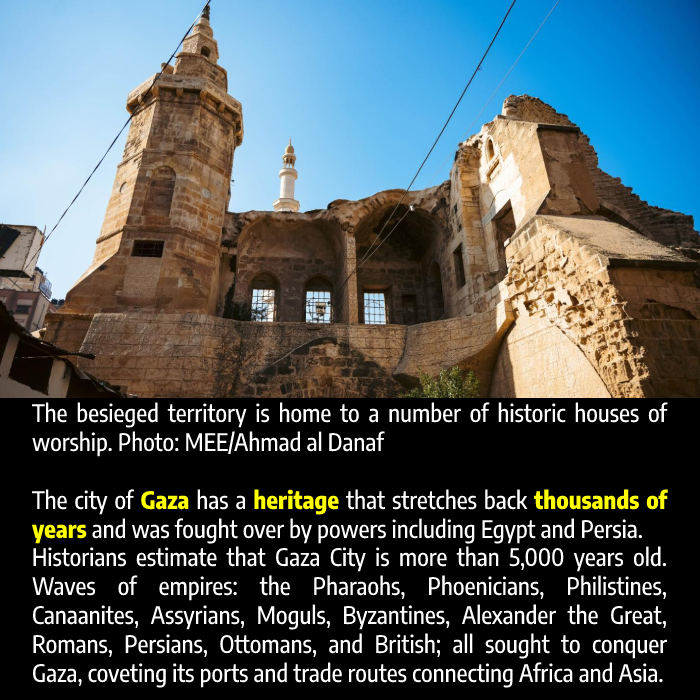
Today, the word “Gaza” conjures up images of human suffering as the Palestinian territory has been under an Israeli and Egyptian siege for the past 16 years.
The tiny strip on the Mediterranean coast has been targeted in numerous Israeli bombing campaigns and military operations over the past decades, and UNRWA, the United Nation’s agency responsible for Palestinian refugees, officially calls the humanitarian situation there an emergency.
The area is home to more than two million people, with Gaza City itself having a population of 590,000. These residents live in a state of constant threat, not only from the Israeli military but also from the pressures placed on the region due to the siege, including limited water resources, poor medical facilities and unreliable energy supplies.
Give its contemporary situation, it is easy to forget the city and wider region’s rich history, which dates back at least 5,000 years.
Situated at the crossroads of the Levant and Egypt, Gaza was a important trading centre, as well as strategically important military site.
In ancient times, it was fought over by the Egyptians and Canaanites, and in more recent times by the British and Ottoman empires.
Its rulers over the millennia include the Egyptians, the Macedonians under Alexander the Great, the Byzantines, Egyptian Mamluks and Ottoman Turks, among many others.
These cultures have left their own mark on Gaza and have contributed to a heritage that is still visible today.
Middle East Eye looks at five historic sites in the city of Gaza that you may not have been aware of.
1. Tell Umm Amer
The Christian monastery of Tell Umm Amer is located in the southern part of Gaza city, and is believed to be the birthplace of Saint Hilarion, a fourth century Syrian-Palestinian monk who was one of the early pioneers of monasticism, or the withdrawal from worldly life to focus on the spiritual life.
For centuries, the monastery served as a stop-off point for travellers on the crossroads between Egypt, Palestine, Syria and Mesopotamia.
The site consists of two churches, a burial site, a baptism hall and public cemetery, as well as an expansive crypt.
Spanning around 25 acres, it is one of the largest monasteries in the region, and the site, though in ruins, is still used for worship by locals.
The UN’s cultural body Unesco considers the site a “high priority” location for protection and preservation.
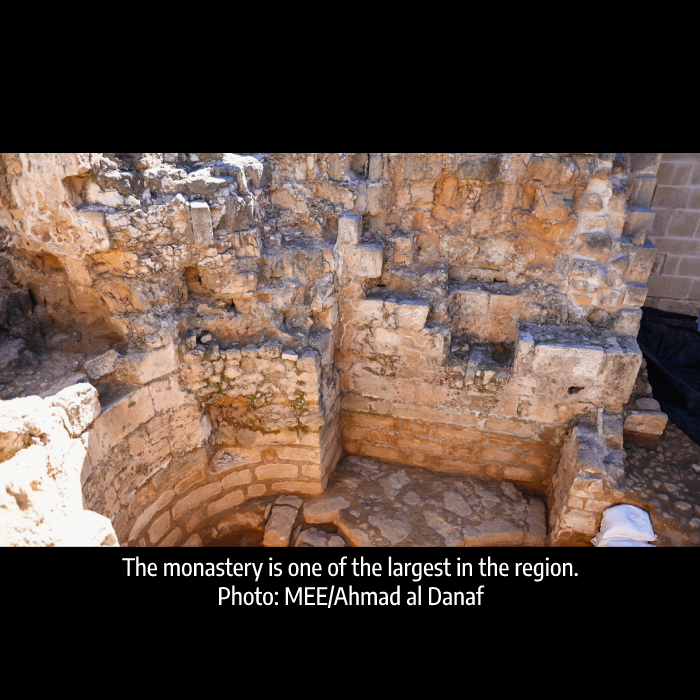
2. Church of Saint Prophyrius
Believed to be one of the oldest active houses of worship in Gaza City, the Church of Saint Prophyrius is named after the fifth century bishop of Gaza, whose tomb is located in the northeastern corner of the site.
The church was originally built in 425 CE but was converted into a mosque in the seventh century. In the 12th century, Crusader forces restored its use as a church.
Some of the building’s most notable features are its half-domed roof and its three entrances, which are supported by marble columns.
Every year, hundreds of people from Gaza’s Christian community attend the church for Christmas services, and the building has also served as a sanctuary during times of conflict.
During the war in 2014, around 2,000 people, mainly women and children, slept in the courtyard and corridors of the church.
The building, which is located in the Al-Zaytoun neighbourhood of Gaza, was partially damaged by Israeli shelling during the attacks.
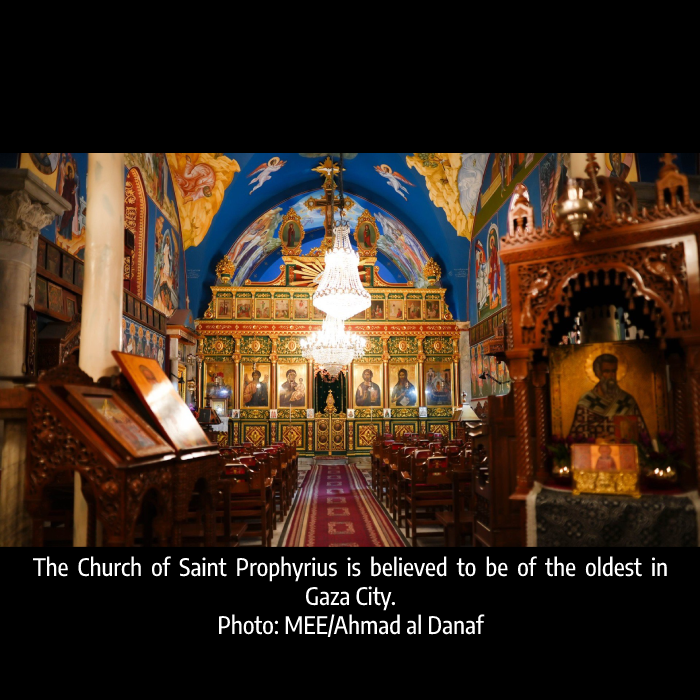
3. Qalaat Barquq
Located in Khan Younis in southern Gaza, the Qalaat Barquq fort was constructed during the rule of the Mamluk Sultan Barquq in 1387.
Once a slave of Circassian origin, Barquq had taken advantage of instability within the Mamluk elite to depose the previous sultan, As-Salih Hajji.
The fort he built was used by merchants travelling between Damascus and Cairo as a place of rest, and the heavy militarisation of the building was probably in response to the threat posed by the Turco-Mongol conqueror Timur, who had established a huge empire across Central and South Asia, as well as the Middle East.
Today the front facade of the fort survives, but most of the structure has either turned to ruin or has been converted for use as living spaces and shops.
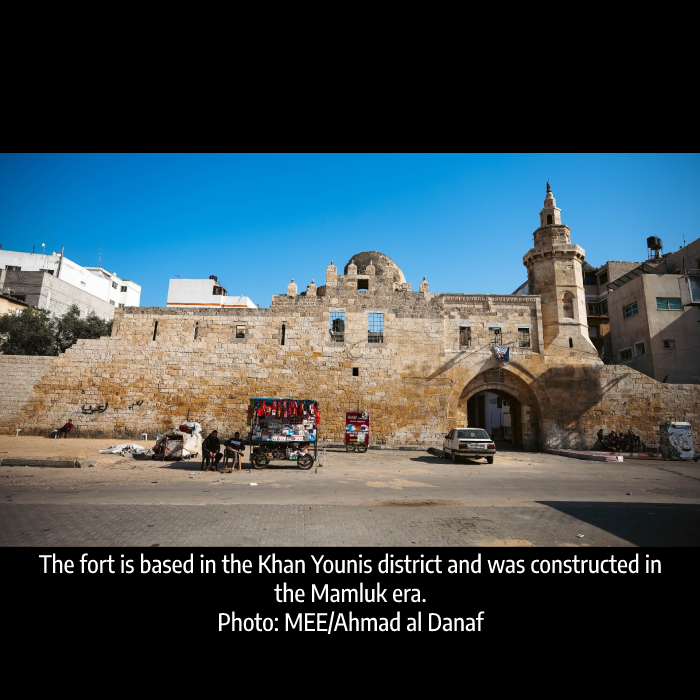
4. Qasr el-Basha
Constructed during the Mamluk period in the mid-13th century, the Qasr el-Basha palace is located within Gaza’s Old City.
According to local lore, the palace is the remaining structure of a residence once occupied by Baybars, an Egyptian Mamluk sultan who frequently battled against the Crusaders and the Mongols, stopping in Gaza during the process.
During one of his visits, Baybars is said to have married a woman from Gaza and erected a grand mansion for his wife and children, forming the core of the present-day palace.
The architectural style of the palace reflects elements from the Ottoman era, during which it served as a fortification for local client rulers. The governors of Gaza, who were appointed by the Ottomans, resided in the building.
During the period of the British Mandate over Palestine, the palace functioned as a police station and later transitioned into a school.
Today, the palace has been transformed into a museum with financial support from the German Development Bank.
It houses a collection of artefacts spanning different periods of Gaza’s history, including the ancient Egyptian, Phoenician, Persian, Hellenistic and Roman eras.
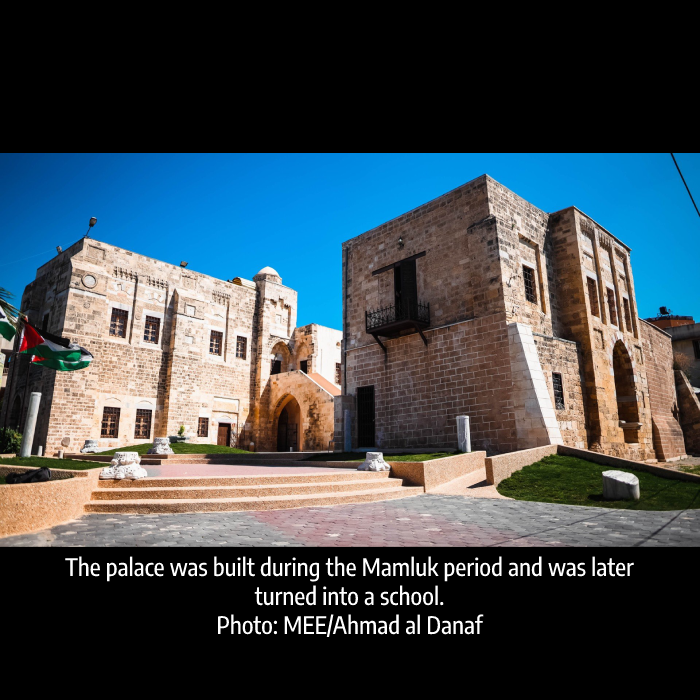
5. Al-Omari Mosque
Situated in the heart of Gaza City, Al-Omari Mosque is the largest and most renowned in the area, setting itself apart with its distinctive arches and expansive open courtyard.
Sometimes referred to as the Great Mosque of Gaza, it occupies a site that was originally home to an ancient temple, subsequently transformed into a Byzantine church in the fifth century.
In the seventh century, during the Muslim conquest, the structure underwent its conversion into a mosque, earning the name “Al-Omari Mosque” in honour of the Islamic Caliph Omar ibn al-Khattab, who reigned during that period.
During the Crusades, the mosque was turned into a church, renamed in honour of Saint John the Baptist. However, it was eventually restored back into a mosque by the Mamluks.
Encompassing approximately 4,100 sqm, with a courtyard spanning 1,190 sqm, the mosque holds great significance for the people of Gaza and Palestine at large, symbolising resilience in the face of adversity.
Over the years, the mosque has survived major earthquakes, as well as several wars.
Its minaret was destroyed by an earthquake in the 11th century, only to be reconstructed and then devastated by another earthquake in the 13th century. Additionally, it suffered substantial damage during World War I but was restored in 1925.
The minaret, designed in the Mamluk architectural style, stands as a testament to the mosque’s historical heritage. Once boasting a substantial library filled with thousands of books and manuscripts, much of its collection was lost during the Crusades and later during World War I, leaving only a smaller portion that remains today.
The mosque has also suffered partial damage in recent years due to Israeli military strikes on Gaza.
Today, the mosque continues to draw worshippers and locals who are captivated by its grandeur and marble construction.
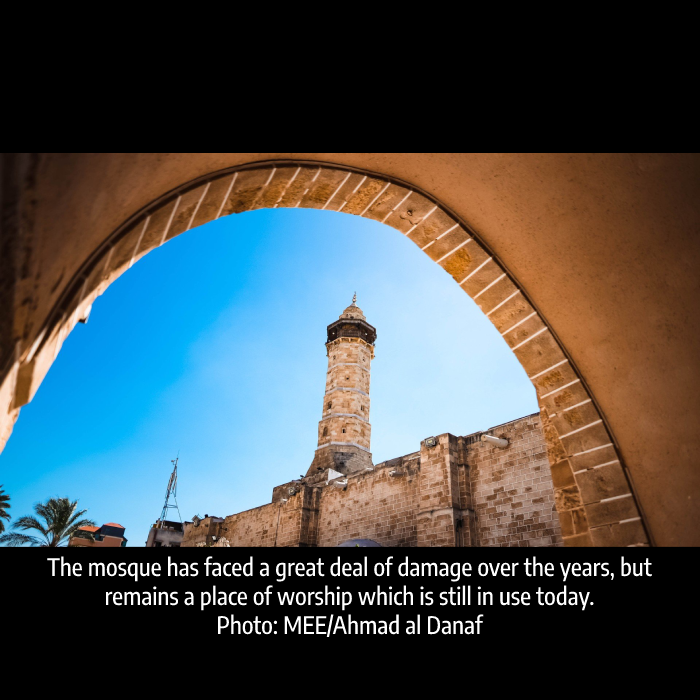
Source: Middle East Eye. 13 June 2023.